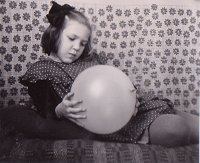Kim Jong Il, Elokuvan Nero
 Kim Jong Il Pohjois-Korealaisessa propagandaelokuvassa
Kim Jong Il Pohjois-Korealaisessa propagandaelokuvassaKim Jong Il pysyy maailman otsikoissa uhkailemalla ydinaseella. Pohjois-Koreassa hänestä mieluummin uutisoidaan elokuva-alan nerona. Viimeisin uroteko oli, kun hän huolimatta kiireistään armeijan tarkastajana, korjaili elokuvan "Diary of a Girl Student" käsikirjoitusta ja teki siitä hengästyttävän mestariteoksen. Niin ainakin Pohjois-Korean uutistoimisto ilmoittaa:
Ystävällistä Rakkaalta Johtajalta nähdä vaivaa filmin vuoksi, joka eroaa suuresti hänen tavallisesta elokuvamaustaan. Kim Jong Ilillä on arviolta 15 000 - 20 000 filmiä, ja hän pitää erityisesti Rambo- ja James Bond -filmeistä. Hänen suosikkinsa on myös Repe Sorsa. Hänellä väitetään olevan maailman suurin kokoelma Repe Sorsa -filmejä.
Kim Jong Il on tosin ennenkin osoittanut kiinnostusta elokuvan tekoon. Vuonna 1973 hän kirjoitti ja käännätti englanninkielelle kirjan "On the Art of the Cinema", joka opastaa muun muassa seuraavissa asioissa:
Hän myös tuki Pohjois-Korean filmituotantoa kaappaamalla Etelä-Korean suosituimman näyttelijättären ja hänen ohjaaja-aviomiehensä tekemään propagandafilmejä. He pakenivat yhdeksän vuoden jälkeen. Kim Jong Il ei suostunut uskomaan, että he olisivat karanneet vapaaehtoisesti, vaan lähetti kutsun palata takaisin Pyongjangiin. He kieltäytyivät. Ilmeisesti sen tapaisten filmien kuin "Johtaja on kansamme suuri isä", "Isällinen Johtaja japanilaisvastaisten vallankumoussoturien joukossa", ja "Isällinen Johtaja virkamiesten keskuudessa" (Tekno-Kekon mielekäs maailmanhistoria) ei inspiroinut riittävästi.
 Kim Jong Il filmikameran takana vuonna 1979
Kim Jong Il filmikameran takana vuonna 1979
Pyongyang, August 10 (KCNA) -- The newly produced feature film "Diary of a Girl Student" is screened before full houses in Pyongyang every day, evoking lively response from people of all walks of life. The film, which embodies the Juche-oriented idea of aesthetics of leader Kim Jong Il, is a model one to which new unique methods of description are boldly introduced. Busy as he was with continuous inspection tour of frontline army units, he improved its script and guided its production to become a masterpiece of the times.
The film, truthfully picturing the life of an ordinary scientist family, gives perfect answers to the questions on where the people in the Songun era should get joy and happiness and on what is the real ideal of the young people.
The heroine and her younger sister make up to their parents devoting themselves to scientific research and grumble at them with misunderstanding. And then they come to understand their parents and their misunderstanding turns into trust and pride, love and happiness. At last the heroine follows her father in scientific research without hesitation. The film strikes deep impressions in the mind of the cinema-goers. Jon Mun Jin, an anti-Japanese revolutionary fighter, said that the film was a hit work representing the film art efflorescing in the new century under the guidance of the great leader.
Minister of Culture Kang Nung Su remarked that appreciating the film time and again, he felt the pride as if he looks down the world on the high eminence of the moviedom in the 21st century, adding that the film was the fine fruit borne under the wise leadership of Kim Jong Il, a great master in art.
Pyon Yong Rip, president of the State Academy of Sciences, emphasized that the film is a close companion of life and struggle, which powerfully calls the scientists to creation and innovation.
President of Kim Chaek University of Technology Hong So Hon had this to say: The film, a masterpiece in the Songun era, raises the importance of education of the younger generation as an important issue at present and impressively tells that only when the youth and children are brought up well, can the generation of the Korean revolution be carried forward with credit.
The viewers make up their mind to live as the heroines do, saying that they want to see the film again.
Ystävällistä Rakkaalta Johtajalta nähdä vaivaa filmin vuoksi, joka eroaa suuresti hänen tavallisesta elokuvamaustaan. Kim Jong Ilillä on arviolta 15 000 - 20 000 filmiä, ja hän pitää erityisesti Rambo- ja James Bond -filmeistä. Hänen suosikkinsa on myös Repe Sorsa. Hänellä väitetään olevan maailman suurin kokoelma Repe Sorsa -filmejä.
Kim Jong Il on tosin ennenkin osoittanut kiinnostusta elokuvan tekoon. Vuonna 1973 hän kirjoitti ja käännätti englanninkielelle kirjan "On the Art of the Cinema", joka opastaa muun muassa seuraavissa asioissa:
A screen portrayal demands first-class filming techniques"
"Make-up is a noble art"
"The assistant director is a creative worker"
"A song with unfailing appeal is a true masterpiece"
Hän myös tuki Pohjois-Korean filmituotantoa kaappaamalla Etelä-Korean suosituimman näyttelijättären ja hänen ohjaaja-aviomiehensä tekemään propagandafilmejä. He pakenivat yhdeksän vuoden jälkeen. Kim Jong Il ei suostunut uskomaan, että he olisivat karanneet vapaaehtoisesti, vaan lähetti kutsun palata takaisin Pyongjangiin. He kieltäytyivät. Ilmeisesti sen tapaisten filmien kuin "Johtaja on kansamme suuri isä", "Isällinen Johtaja japanilaisvastaisten vallankumoussoturien joukossa", ja "Isällinen Johtaja virkamiesten keskuudessa" (Tekno-Kekon mielekäs maailmanhistoria) ei inspiroinut riittävästi.
 Kim Jong Il filmikameran takana vuonna 1979
Kim Jong Il filmikameran takana vuonna 1979 Mette miettii
Mette miettii












1 Comments:
Torstain Hesarissa kerrottiin vallankumouselokuvasta Soy Cuba, joka on noussut kulttielokuvaksi amerikoissa. Ehkä naisopiskelijan päiväkirja jossain vaiheessa on samanlainen kulttifilmi?
Lähetä kommentti
<< Home